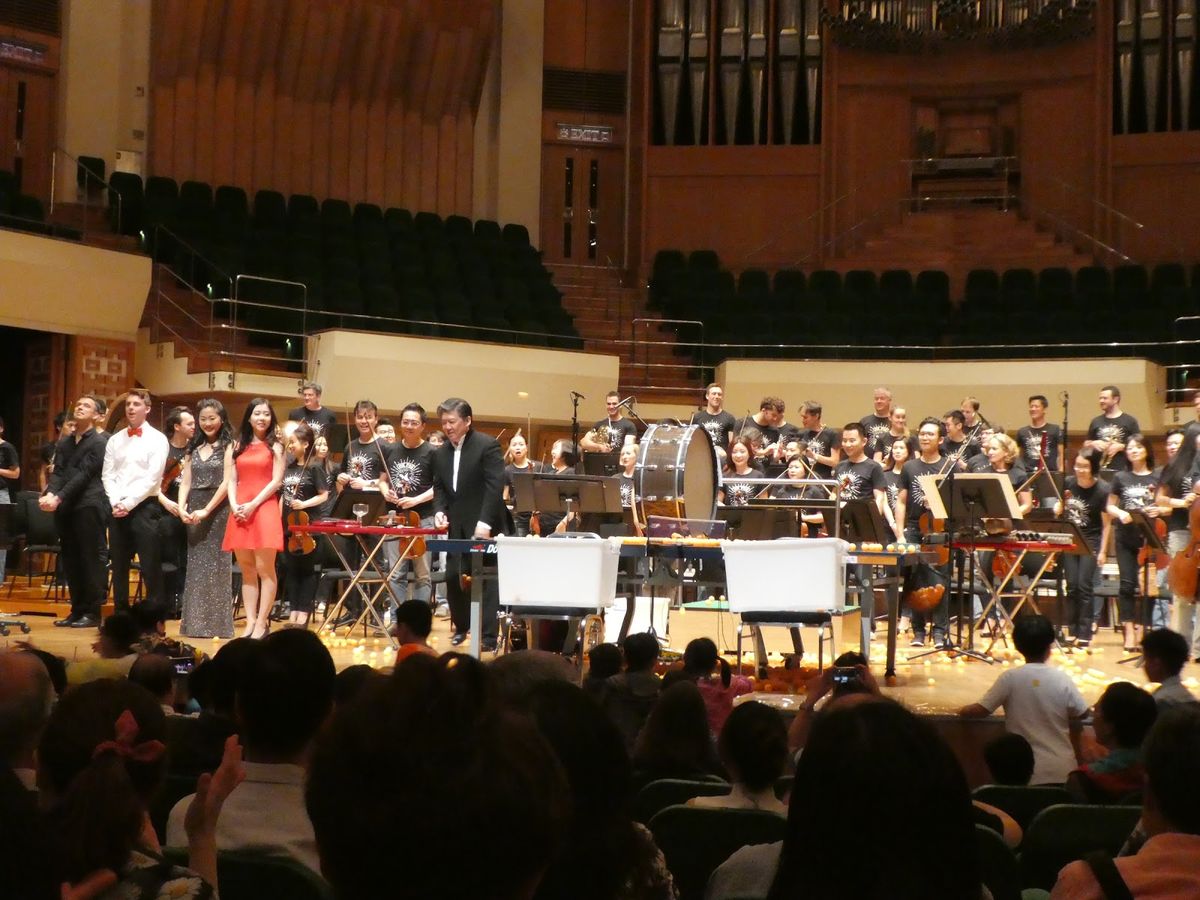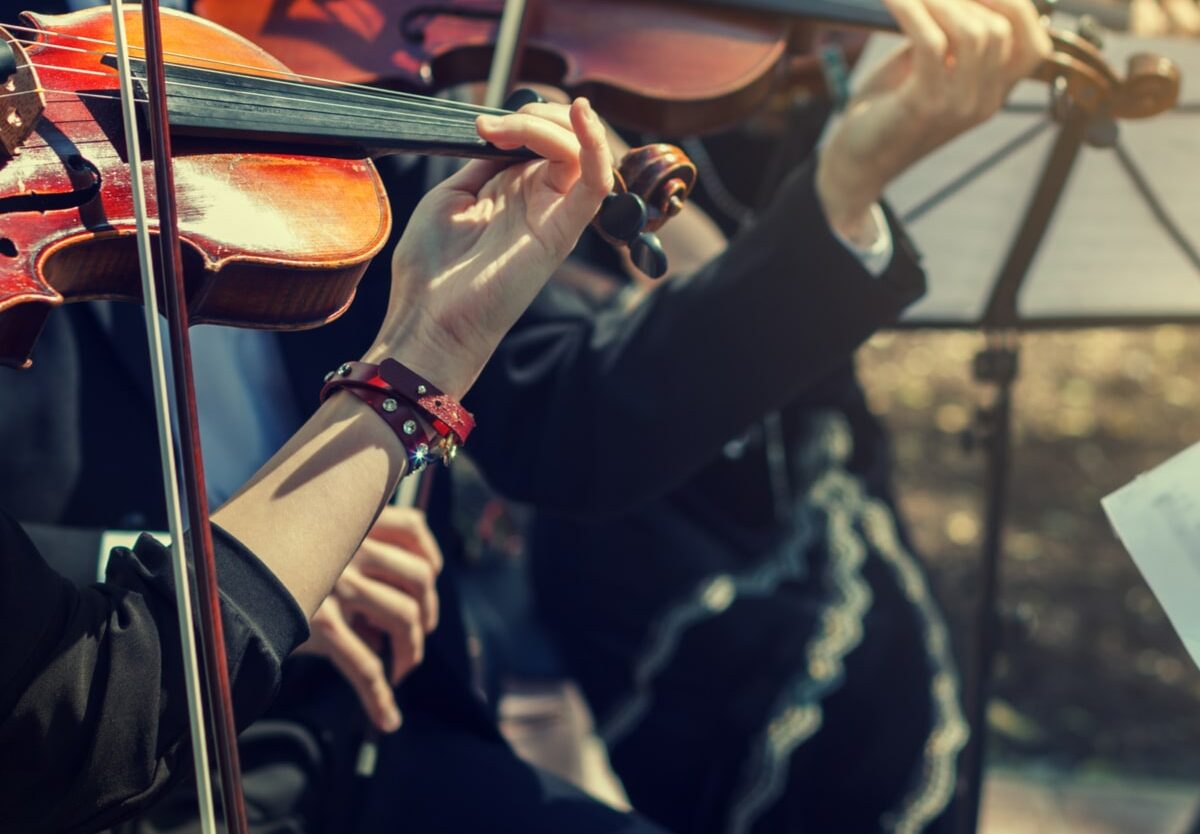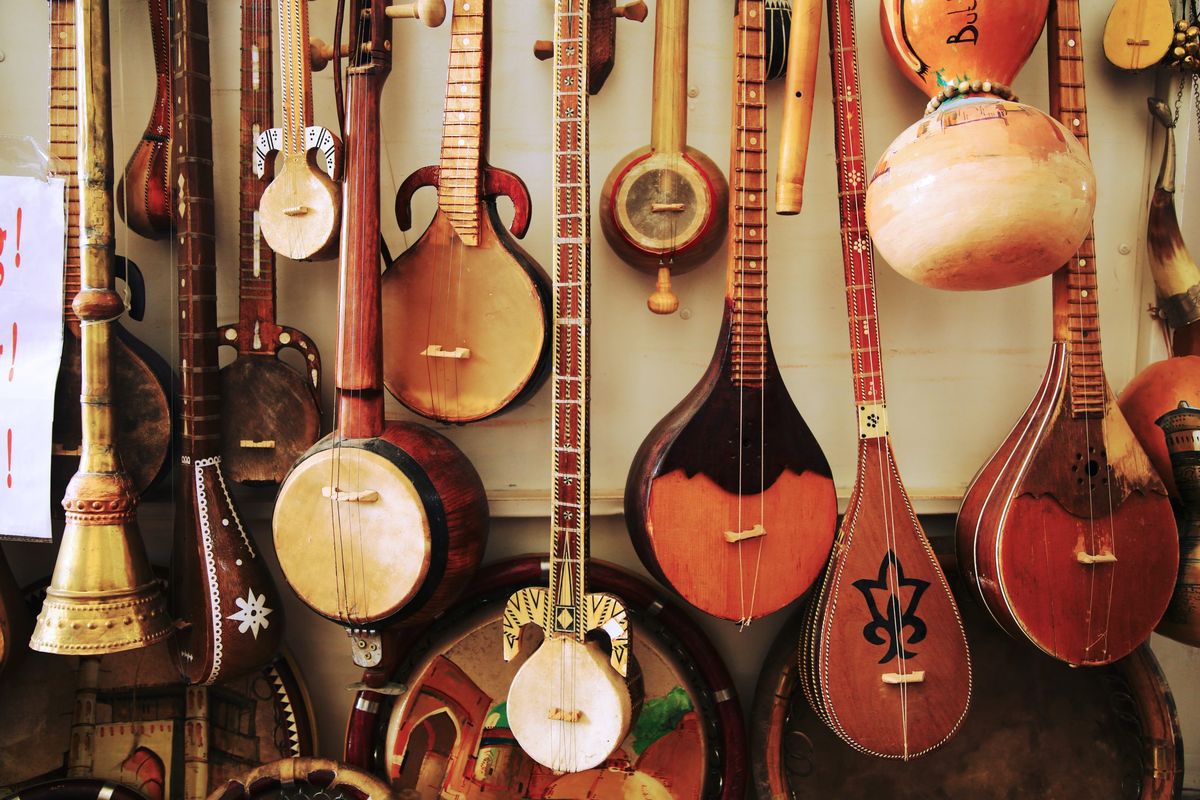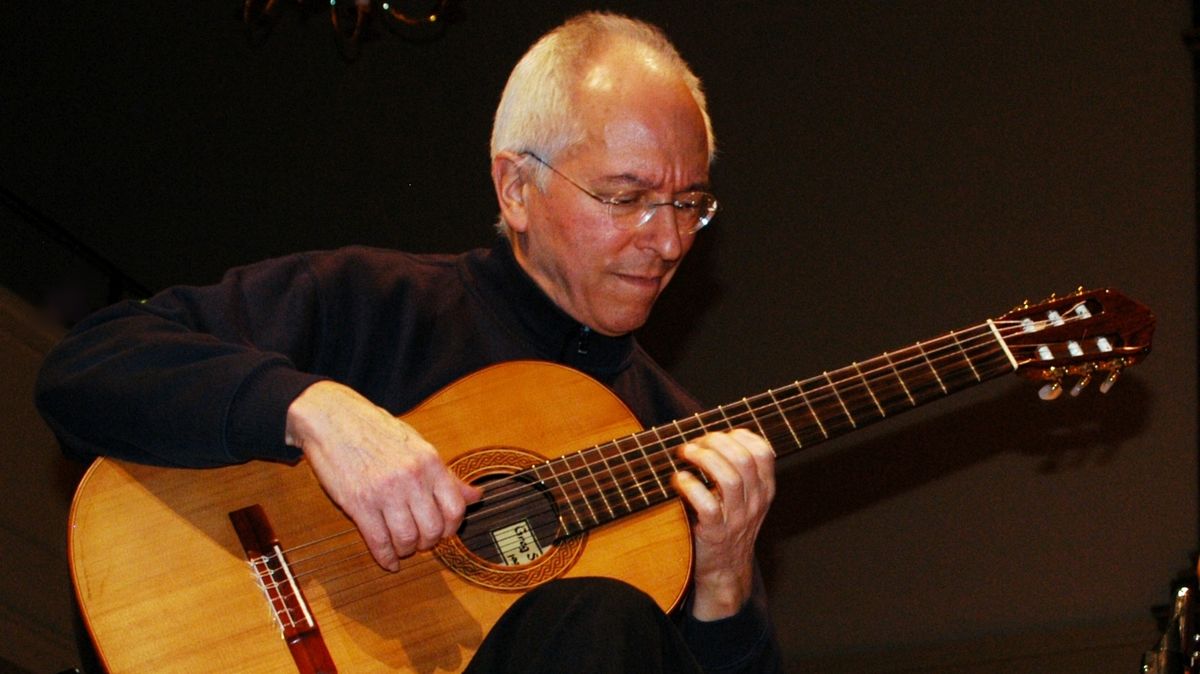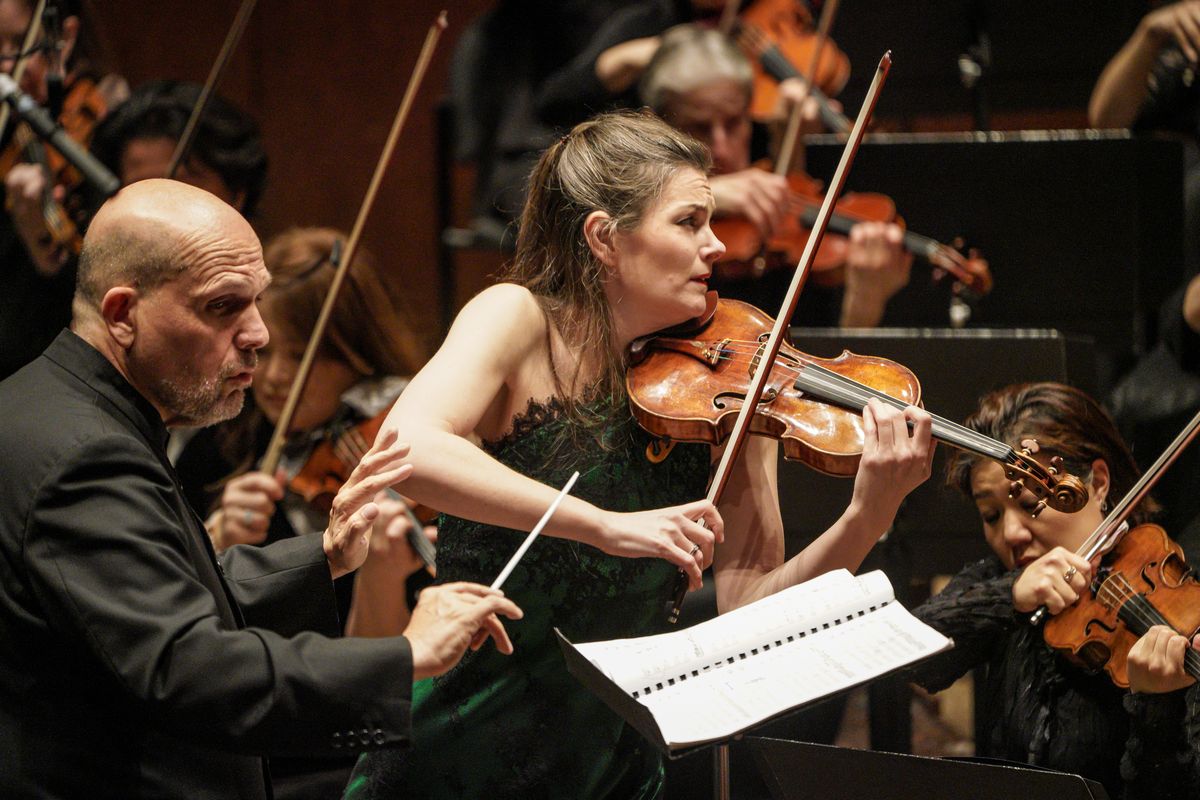

Classical
What Is Movement In Classical Music
Modified: January 22, 2024
Discover the art of movement in classical music and explore its significance in this insightful guide. Gain a deeper understanding of classical compositions and the emotion they convey through their dynamic rhythms and melodies.
(Many of the links in this article redirect to a specific reviewed product. Your purchase of these products through affiliate links helps to generate commission for AudioLover.com, at no extra cost. Learn more)
Table of Contents
Introduction
Classical music is a genre renowned for its complexity and depth. Within the realm of classical music, compositions are often divided into smaller sections called movements. These movements play a crucial role in shaping the overall structure and emotional journey of a piece. Understanding what a movement is and its significance is essential for appreciating and interpreting classical music.
In simple terms, a movement can be described as a self-contained section within a larger composition, such as a symphony, concerto, or sonata. Each movement is characterized by a distinct theme, mood, or musical idea that contributes to the overall narrative of the piece. Think of movements as individual chapters within a book, each offering a unique perspective and contributing to the overarching story.
The concept of movements in classical music emerged during the Baroque period and flourished during the Classical era. Composers such as Johann Sebastian Bach, Wolfgang Amadeus Mozart, and Ludwig van Beethoven mastered the art of structuring their compositions into multiple movements.
Movements serve various purposes within a composition. They provide contrast, allowing different musical ideas to coexist and create a sense of progression. They also offer the listener moments of pause and reflection, providing a structured framework that helps maintain the listener’s engagement.
The structure of a movement typically follows a standardized format, although there are exceptions. Most movements consist of several distinct sections, such as an exposition, development, and recapitulation. Each section explores different musical themes or motifs while maintaining a cohesive connection throughout the movement.
There are different types of movements in classical music, including sonata allegro, minuet and trio, scherzo, adagio, and rondo, among others. Each type has its own specific characteristics and contributes to the overall aesthetic of a composition.
Understanding the role and importance of movements within a composition allows listeners to appreciate the depth and complexity of classical music on a deeper level. By recognizing the distinct themes and musical ideas within each movement, listeners can follow the artistry and creativity of composers as they weave these elements together.
In the following sections, we will explore the characteristics of a movement, examine the structure of a movement, delve into different types of movements in classical music, and highlight examples of well-known movements that have left an indelible mark on the classical music landscape.
Definition of Movement in Classical Music
A movement in classical music can be defined as a self-contained section within a larger composition, often characterized by a distinct theme, mood, or musical idea. It is a way for composers to organize their musical ideas and create a cohesive structure for a piece.
Think of a movement as a musical chapter within a larger story. Each movement contributes to the overall narrative, providing variation and contrast to keep the listener engaged. They serve as building blocks that shape the composition as a whole.
Movements were popularized during the Baroque period and became a fundamental part of classical music composition during the Classical era. Composers such as Bach, Mozart, and Beethoven recognized the value of dividing their works into smaller sections to create a sense of progression and shape the emotional arc of their compositions.
While the exact structure and characteristics of a movement can vary depending on the style and composer, there are some common elements that define it. A movement typically has its own tempo, meter, key signature, and musical material that distinguishes it from other movements in the same composition.
A movement can range in length, from just a few minutes to over 20 minutes, depending on the composition and the intentions of the composer. Some compositions consist of only one movement, while others may have multiple movements.
One of the key aspects of a movement is the development of musical themes and motifs. A composer introduces a theme in the exposition section of the movement, which is then elaborated upon and developed in subsequent sections. This allows for exploration and variation of the musical ideas, creating a sense of evolution within the movement.
Overall, a movement serves as a structural and expressive device in classical music. It provides composers with the opportunity to organize their thoughts and ideas, create contrast and variation, and take the listener on a musical journey. Understanding the concept of movements is essential for appreciating and interpreting classical music, as it helps us dissect the composition and appreciate the intricacies and intentions of the composer.
Characteristics of a Movement
A movement in classical music possesses several distinctive characteristics that contribute to its unique identity within a larger composition. These characteristics shape the mood, structure, and overall musical experience for the listener. Understanding the key characteristics of a movement provides insight into the intentions of the composer and enhances our appreciation of classical music.
One of the prominent characteristics of a movement is its distinct theme or musical idea. Each movement is built around a specific motif that serves as the foundation for the musical development within that section. This theme can evoke a particular emotion or create a specific musical atmosphere, setting the tone for the movement.
Tempo and rhythm are also important characteristics of a movement. Composers carefully choose the tempo, which determines the speed at which the music is played, and the rhythm, which governs the pattern and arrangement of musical notes. The tempo and rhythm of a movement can greatly influence its overall mood and energy.
Key signature is another characteristic that defines a movement. Each movement typically has its own key signature or tonal center, which indicates the musical key in which it is predominantly composed. The key signature contributes to the harmonic and melodic structure of the movement, providing a sense of stability and coherence.
Another defining characteristic of a movement is its form. Most movements adhere to a specific form, such as sonata-allegro, minuet and trio, or rondo. These forms offer a framework for composers to structure their musical ideas, creating a sense of balance and progression within the movement.
Dynamics play a significant role in shaping the characteristics of a movement. Composers strategically employ changes in volume to add depth and contrast to the music, creating moments of tension and release. These dynamic variations enhance the emotional impact of the movement and contribute to its overall expressive power.
Furthermore, a movement often exhibits variation and development of musical themes. Composers introduce a theme or motif in the exposition section and then explore different variations and elaborate on it throughout the movement. This development allows for musical growth and transformation, adding depth and complexity to the composition.
Lastly, a movement possesses its own internal structure. It consists of distinct sections, such as an exposition, development, and recapitulation, each fulfilling a specific role in the overall progression of the movement. These sections provide variation and contrast, guiding the listener through different musical ideas and creating a sense of narrative within the movement.
By understanding and appreciating these characteristics, listeners can delve deeper into the essence of a movement and grasp the intricacies of the composer’s intentions. The distinct themes, tempo, key signature, form, dynamics, variation, and structure of a movement all contribute to its unique qualities, making it an essential element in the rich tapestry of classical music.
Structure of a Movement
The structure of a movement in classical music is a vital aspect that contributes to its coherence and overall impact. Composers carefully organize their musical ideas within a movement, creating a framework that guides the listener through different sections and develops the thematic material. Understanding the structure of a movement allows us to appreciate the logical progression and narrative flow of the music.
While the specific structure can vary depending on the composer and the musical form employed, most movements follow a standardized format. A common structure consists of three main sections: the exposition, development, and recapitulation.
The exposition is the initial section of a movement where the primary themes and motifs are introduced. It establishes the key signature and presents contrasting musical ideas. Often, the exposition consists of multiple subsections, each exploring a different musical theme or mood. It sets the foundation for the subsequent development and serves as an essential starting point for the musical journey.
The development section is where the themes introduced in the exposition are further explored and transformed. Composers play with variations, transpositions, and combinations of the musical material, creating tension, and showcasing their compositional prowess. The development section offers a sense of contrast and pushes the thematic ideas to new heights, offering a musical exploration of the initial material.
The final section of the movement is the recapitulation. Here, the primary themes return, but with a twist. The recapitulation restates the thematic material introduced in the exposition, but this time in the same key signature as the exposition, creating a sense of resolution and unity. It provides closure and allows the listener to revisit familiar musical ideas in a new light.
In addition to these three primary sections, a movement can include other subsections depending on the form and style. For example, a minuet and trio movement may have a contrasting middle section between the minuet and the trio. A rondo movement may have a recurring theme that appears between contrasting episodes.
Throughout these sections, composers incorporate various musical techniques to maintain the listener’s interest and engagement. They may utilize dynamics, articulation, and harmonic devices to create tension and release, contrasting sections, and highlight specific musical ideas.
By understanding the structure of a movement, listeners can follow the logical progression of the music and recognize the relationship between different sections. It provides a sense of cohesion and guides our understanding of the composer’s intentions. The structure of a movement is a testament to the intricate craftsmanship of classical music and offers an enriching experience for both listeners and performers.
Types of Movements in Classical Music
In classical music, there are various types of movements, each with its own distinctive characteristics and purposes. These movements contribute to the overall structure and aesthetic of a composition, offering diversity and contrast within the larger work.
Sonata-Allegro: Sonata-allegro is one of the most common types of movements. It typically consists of three sections: exposition, development, and recapitulation. The exposition introduces the main themes and establishes the musical material. The development section explores and develops these themes further, often incorporating key changes and variations. The recapitulation restates the primary themes, usually in the original key, providing a sense of resolution.
Minuet and Trio: The minuet and trio movement is often found in symphonies and chamber music. It comprises three sections: minuet, trio, and a return to the minuet. The minuet is a graceful and elegant dance-like section with a regular rhythmic pattern. The trio section provides contrast, often with a different melodic and harmonic character. Finally, the minuet is repeated, creating a sense of symmetry and balance.
Scherzo: The scherzo is a lively and rhythmic movement that replaced the minuet in many compositions during the 19th century. It is characterized by its fast tempo and playful nature. Similar to the minuet and trio, it consists of three sections: scherzo, trio, and a return to the scherzo. The scherzo section is energetic and spirited, while the trio section offers a contrasting melodic and harmonic landscape. The return to the scherzo concludes the movement with a reiteration of the initial material.
Adagio: Adagio movements are known for their slow tempo and expressive nature. They typically evoke a sense of tranquility and introspection. Adagios often showcase beautiful melodies and lush harmonies, allowing listeners to immerse themselves in the emotional depth of the music.
Rondo: A rondo movement is characterized by its recurring theme, known as the “refrain.” It follows an ABACADA structure, where the refrain alternates with contrasting episodes. The refrain serves as an anchor, returning multiple times throughout the movement, while the contrasting episodes provide variety and contrast. Rondos are often lively and joyful in nature.
Other Types: There are other types of movements as well, such as the theme and variations, where a recurring theme is developed through a series of variations; the fugue, characterized by its intricate contrapuntal style; and the aria, often found in vocal works, featuring a soloist accompanied by an orchestra.
These different types of movements contribute to the overall richness and diversity of classical music compositions. Composers select and structure the movements based on their artistic vision and the thematic material they wish to explore. Understanding the various types of movements allows listeners to appreciate the unique qualities and intentions behind each section, enhancing their experience of the music.
Importance of Movements within a Composition
Movements play a pivotal role within a composition, offering structure, contrast, and emotional depth. They are essential building blocks that contribute to the overall narrative and artistic vision of a piece. Understanding the importance of movements within a composition allows us to appreciate the intricacies and intentions of the composer.
One of the primary functions of movements is to provide contrast. Each movement introduces new themes, moods, and musical ideas, creating variety and preventing the music from becoming monotonous. By juxtaposing different musical elements, a composition can evoke a wide range of emotions and keep the listener engaged throughout.
Movements also serve as points of rest and reflection within a composition. After the culmination of one movement, the transition into the next offers a brief moment for the listener to absorb and appreciate what has been heard. This pause allows for emotional processing and anticipation of what is to come, enhancing the overall impact of the music.
The structure of movements enables composers to unfold their musical ideas in a methodical and logical manner. Each movement follows a predefined form and development, allowing for a clear trajectory and progression. This structure helps guide the listener through the musical journey, providing a sense of coherence and anticipation.
Furthermore, movements allow for focused exploration of specific themes or motifs. By dedicating an entire movement to a particular idea, composers can delve deep into its variations and development, showcasing their compositional craft and artistic vision. Movements provide a canvas for composers to explore the full potential of their musical material.
Movements also contribute to the emotional arc of a composition. By utilizing different tempos, dynamics, and harmonic progressions, composers can create a diverse range of emotional landscapes within a single piece. Each movement offers its own unique emotional experience, providing highs and lows and allowing for cathartic moments of release.
Moreover, movements are essential for performers and interpreters of classical music. They provide natural points for rehearsal and interpretation, allowing musicians to focus on specific sections and nuances. The distinct themes and moods within movements provide opportunities for musicians to showcase their technical skills and expressivity.
Ultimately, the importance of movements within a composition lies in their ability to shape the overall artistic impact. They contribute to the structure, contrast, emotional depth, and thematic development of the music. By understanding and appreciating the role of movements, we can better grasp the intentions of the composer and fully immerse ourselves in the rich and captivating world of classical music.
Examples of Well-Known Movements in Classical Music
Classical music is filled with countless examples of iconic and well-known movements that have captivated audiences for centuries. These movements showcase the brilliance and creativity of composers and have left an indelible mark on the classical music landscape. Let’s explore a few notable examples:
First Movement of Beethoven’s Symphony No. 5: The first movement of Beethoven’s Symphony No. 5 is one of the most recognizable and powerful movements in classical music. Opening with the famous “Fate” motif, it sets a dramatic and intense tone that captivates listeners from the very beginning. The movement follows the traditional sonata-allegro form, with a dynamic and relentless development section that builds to an exhilarating climax. It is a testament to Beethoven’s mastery of creating tension and showcasing his revolutionary approach to composing.
Third Movement of Mozart’s Symphony No. 40: The third movement of Mozart’s Symphony No. 40 is a perfect example of a minuet and trio movement. It features a charming and graceful minuet section, characterized by its elegant melody and dance-like rhythm. The contrasting trio section offers a mellower and more lyrical mood before returning to the lively minuet. This movement showcases Mozart’s ability to create delicate and intricate musical textures while maintaining a sense of balance and beauty.
Fourth Movement of Tchaikovsky’s Symphony No. 5: The fourth movement of Tchaikovsky’s Symphony No. 5 is a thrilling and emotionally charged finale. It begins with a bold and triumphant brass fanfare, followed by a lyrical and expressive main theme. The movement builds in intensity and showcases Tchaikovsky’s gift for lush orchestration and dramatic storytelling. With its sweeping melodies, energetic rhythms, and exhilarating climax, this movement exemplifies the power and emotional depth of Tchaikovsky’s compositions.
Second Movement of Beethoven’s Piano Sonata No. 14 “Moonlight Sonata”: The second movement of Beethoven’s “Moonlight Sonata” is a hauntingly beautiful and contemplative adagio. Its flowing and melancholic melody is instantly recognizable and has become one of the most beloved piano movements in the classical repertoire. The movement’s tranquil and introspective atmosphere creates a sense of introspection and has captivated audiences with its poignant and expressive qualities.
Final Movement of Dvořák’s Symphony No. 9 “From the New World”: The final movement of Dvořák’s Symphony No. 9 is a rousing and exuberant showcase of the composer’s Czech roots. Known as the “New World Symphony,” this movement blends elements of American folk music with Dvořák’s signature melodic and rhythmic style. The movement features a lively and infectious melody that evokes a sense of energy and joy. It is a testament to Dvořák’s ability to infuse classical symphonic music with elements of nationalism and cultural richness.
These are just a few examples of well-known movements in classical music, each showcasing the brilliance, creativity, and emotional depth of their respective composers. Exploring these movements allows us to appreciate the timeless beauty and enduring impact of classical music throughout the centuries.
Conclusion
As we come to the end of our exploration of movements in classical music, we can appreciate the profound impact they have on the overall structure, emotional journey, and artistic expression of a composition. Movements serve as the building blocks that shape the narrative and immerse listeners in the world of classical music.
From the distinct themes and moods to the careful development and structural organization, movements offer a rich and varied musical experience. They provide contrast, exploration, and moments of reflection, keeping the listener engaged and emotionally connected throughout a piece.
The importance of movements within a composition cannot be overstated. They allow composers to unfold their musical ideas and explore different themes and variations. Movements bring coherence, progression, and unity to a piece, guiding listeners through a thoughtfully crafted musical journey.
We have seen the different types of movements, from the sonata-allegro and minuet and trio to the adagio and rondo, each contributing its own distinct characteristics and aesthetic. These diverse types of movements demonstrate the versatility and creativity of composers, showcasing their ability to evoke a range of emotions and capture the essence of the human experience through music.
Moreover, the examples of well-known movements mentioned earlier, such as Beethoven’s Symphony No. 5, Mozart’s Symphony No. 40, and Tchaikovsky’s Symphony No. 5, serve as reminders of the timeless beauty and enduring power of classical music. These movements have touched the hearts and stirred the souls of generations, leaving an everlasting impact on the cultural landscape.
Understanding and appreciating movements in classical music allows us to delve deeper into the artistry and craftsmanship of composers. By recognizing the distinct themes, structures, and emotional journeys within a composition, we can fully immerse ourselves in the rich tapestry of classical music, experiencing its beauty and depth in a profound way.
As we continue to explore and celebrate the world of classical music, let us embrace the significance of movements within compositions and allow them to guide us on a transformative and unforgettable musical voyage.



